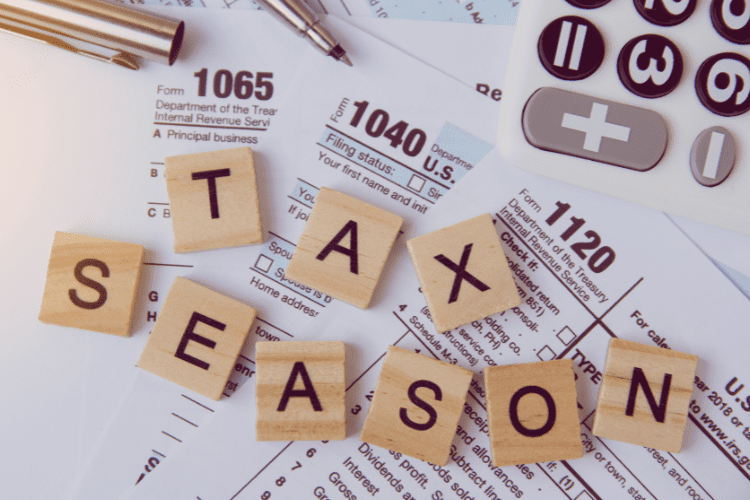Are You Ready For Tax Season? Here Are The Most Recent Changes

While very few of us enjoy tax season, staying on top of recent changes is one of the easiest ways to maximize your return.
The tax landscape is constantly changing, and 2023 is no exception. From student loan payment deductions to expanded healthcare coverage, you can benefit from plenty of credits and deductions this year.
Let’s explore the IRS’s most recent changes to prepare you for this tax season!
Main Rules And Changes For This Tax Season
1. Student Loan Payments
After a long pause during the pandemic, student loan payments resumed last September. It may have been tough on many people’s wallets, but thankfully, there’s good news if you restart your payments.
This tax season, you could see your tax bill go down based on your student loan interest deduction. This adjustment lets you deduct the interest paid, potentially lowering your overall tax burden.
2. Healthcare Coverage from the ACA Marketplace
The IRS has expanded the Premium Tax Credit (PTC), making more people eligible for more extensive credits and affordable healthcare premiums. This change will primarily benefit those who earn above 400% of the federal poverty level, allowing them to receive credits toward premiums at reduced rates.
3. Energy-Efficient Home Improvements
If you’re planning on making home improvements, consider tapping into these new credits:
- Energy Efficient Home Improvement Credit (EEHIC): Some eligible improvements include installing energy-efficient windows, doors, insulation, and specific heating and cooling systems. This credit has a maximum limit of up to $1,200 per taxpayer per year and a $600 cap per item.
- Residential Clean Energy (RCE) Credit: Investments in solar panels or solar water heaters can get you a credit valued at 30% of the cost, encouraging a faster transition towards green energy.
4. Electric Vehicle Purchase
2023’s tax rules introduce new credits when you buy an electric vehicle (EV). Purchasing a used one can earn you a credit of up to $4,000, while new EV buyers could receive up to $7,500. Vehicles need to meet specific requirements, and your income needs to be below certain thresholds, so remember to check your eligibility before trying to use this credit.
5. Retirement Plan Distributions for Disaster Expenses
A new provision lets you take out $22,000 from specific retirement plans without the usual 10% early distribution penalty if you live in a federally declared disaster area. On top of this new regulation, you’ll have three years to pay the tax on the distribution, giving you some much-needed relief.
6. State Tax Rebates or Relief Payments
Many taxpayers received state tax rebates or relief payments in 2023. But thankfully, the federal government doesn’t consider them taxable income, giving you a small financial boost.
A Quick Review Of 2023’s Tax Brackets
With inflation adjustments, the 2023 tax brackets and standard deductions had a larger boost than other years. The IRS updated these numbers to prevent “bracket creep,” which may help lower tax liability if your income hasn’t kept up with inflation.
We already reviewed 2023’s income brackets before, but here’s a quick rundown if you need it:
Single Filers
- 10% for incomes up to $11,000
- 12% for incomes between $11,001 and up to $44,725
- 22% for incomes between $44,726 and up to $95,375
- 24% for incomes between $95,376 and up to $182,100
- 32% for incomes between $182,101 and up to $231,250
- 35% for incomes between $231,251 and up to $578,125
- 37% for incomes over $578,126
Married Couples Filing Separately
- 10% for incomes up to $11,000
- 12% for incomes between $11,001 and up to $44,725
- 22% for incomes between $44,276 and up to $95,375
- 24% for incomes between $94,376 and up to $182,100
- 32% for incomes between $182,101 and up to $231,250
- 35% for incomes between $231,251 and up to $346,875
- 37% for incomes over $346,876
Married Couples Filing Jointly
- 10% for incomes up to $22,000
- 12% for incomes between $22,001 and up to $89,450
- 22% for incomes between $89,451 and up to $190,750
- 24% for incomes between $190,751 and up to $364,200
- 32% for incomes between $364,201 and up to $462,500
- 35% for incomes between $462,501 and up to $693,750
- 37% for incomes over $693,751
Head Of Households
- 10% for incomes up to $11,000
- 12% for incomes between $11,001 and up to $44,725
- 22% for incomes between $44,726 and up to$95,375
- 24% for incomes between $95,376 and up to $182,100
- 32% for incomes between $182,101 and up to $231,250
- 35% for incomes between $231,251 and up to $578,125
- 37% for incomes over $578,126
When Do I Need To File Taxes?
The final deadline for filing your 2023 taxes is April 15, 2024. Remember to file your paperwork ahead of time to avoid any unwanted surprises. The penalties for missing taxes could be steep, so don’t wait until the last minute!
The Bottom Line
The 2023 tax season brings exciting changes that can benefit many taxpayers.
By understanding these updates and planning accordingly, you can minimize your tax burden and take advantage of a larger refund this year. Take advantage of these opportunities and file this year’s taxes ASAP!
Read more:









